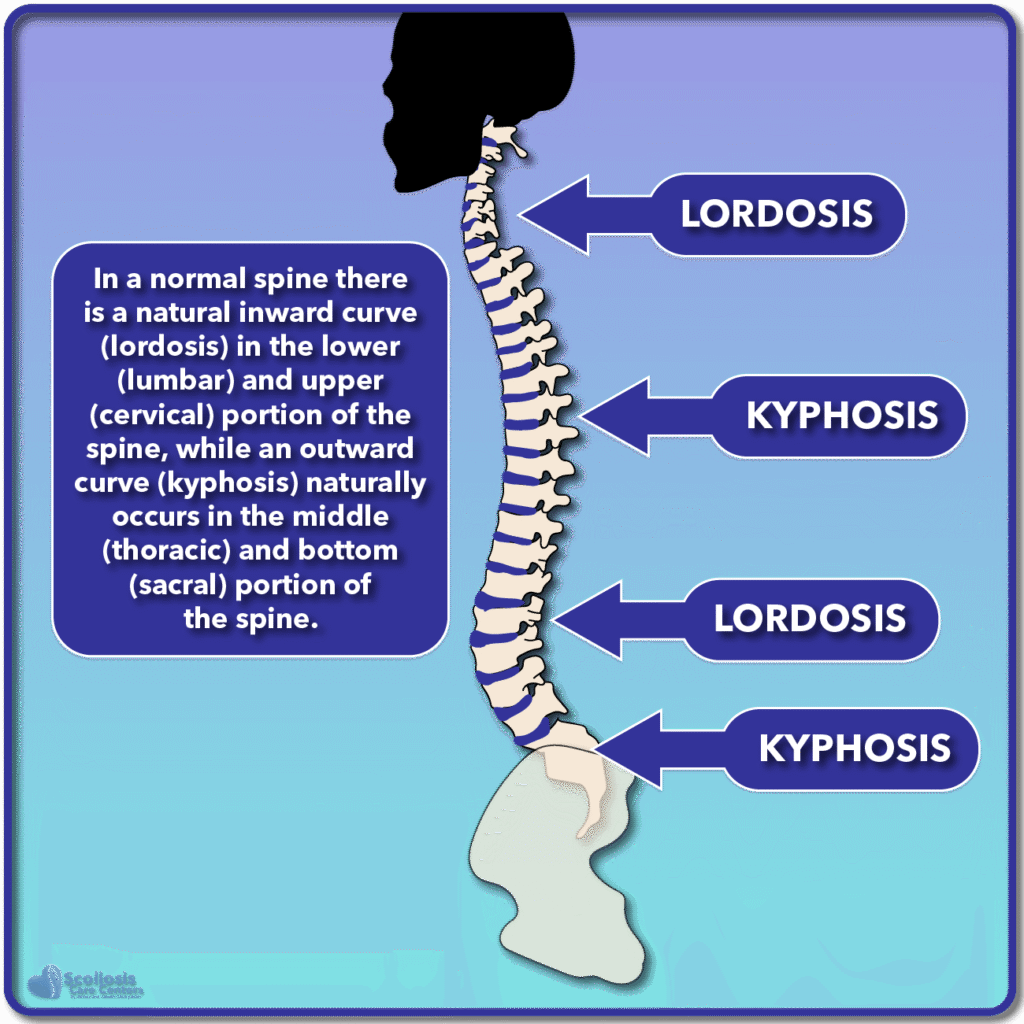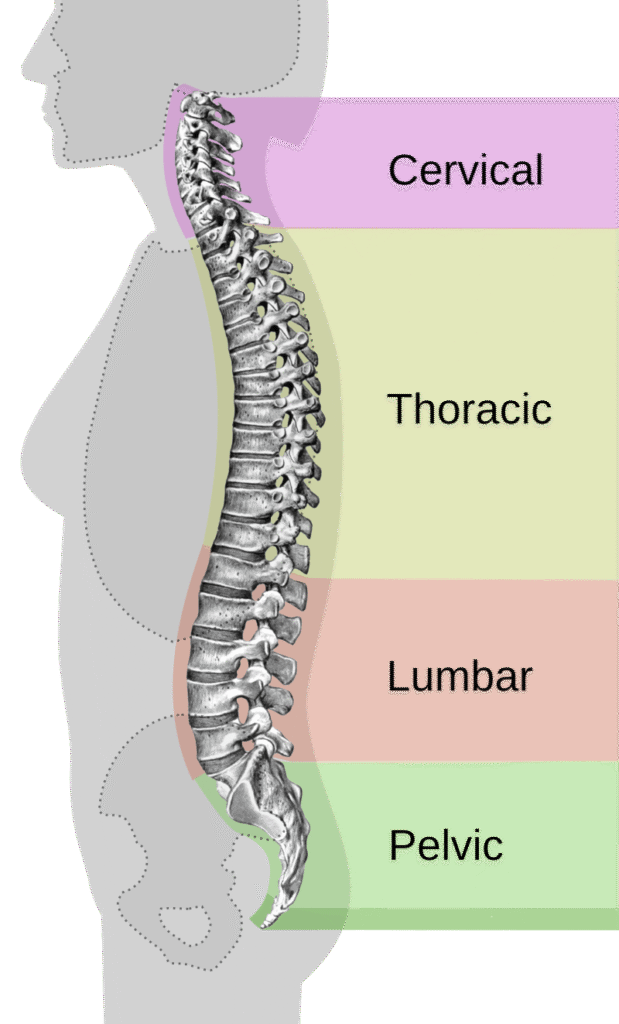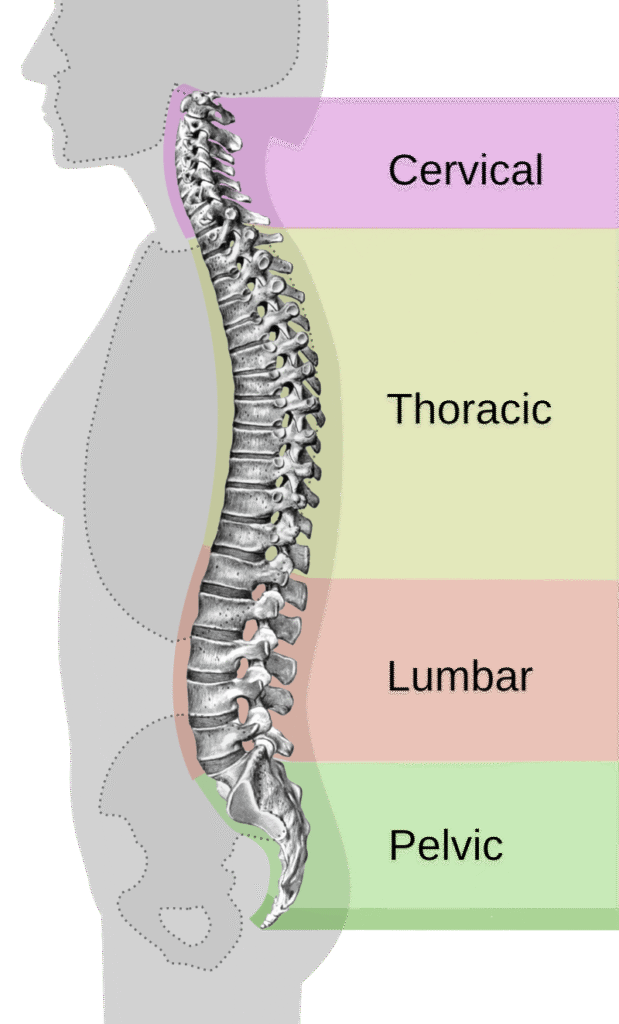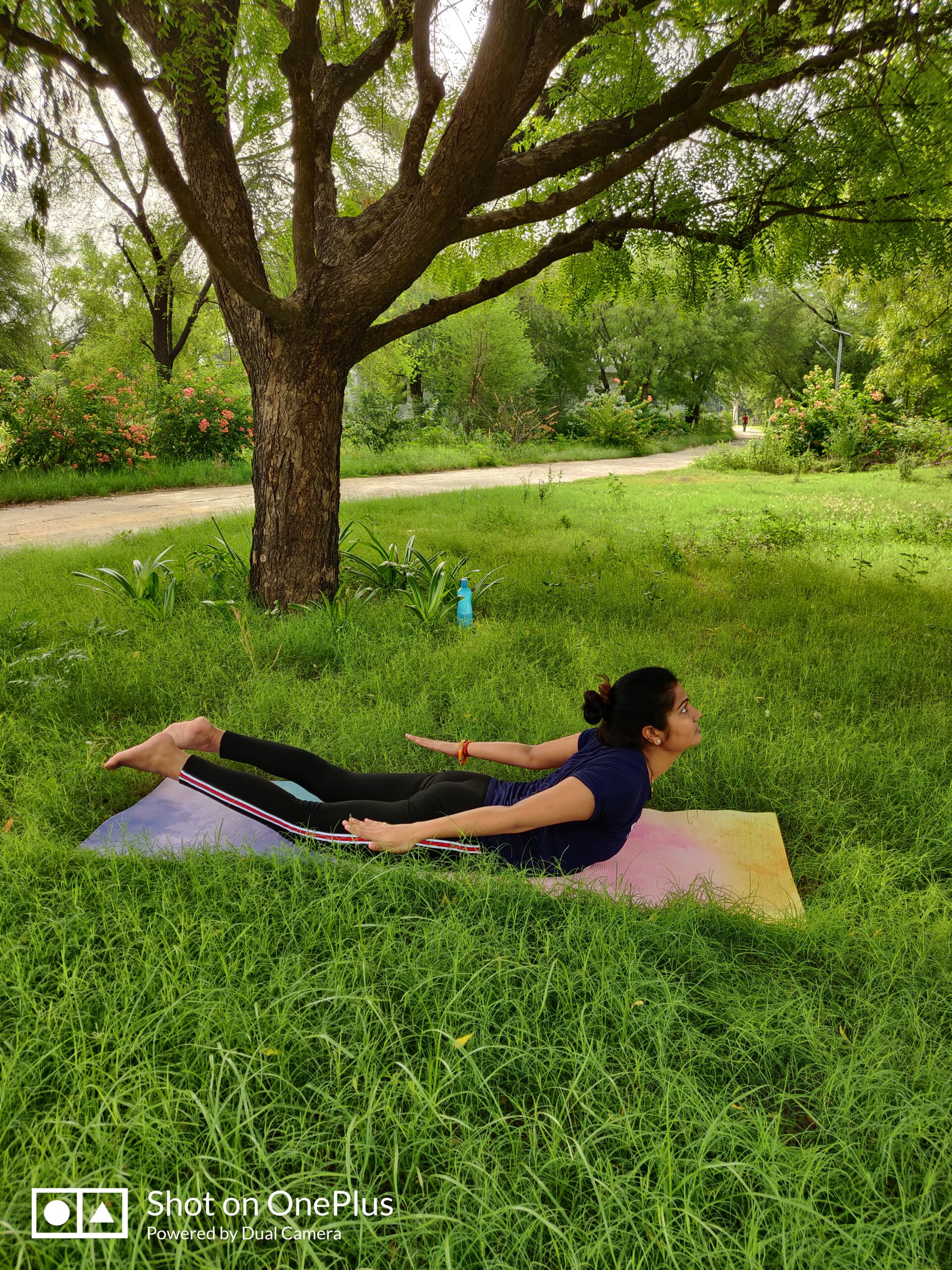4 Types of Spinal Curves Explained – What You Need to Know.
The human spine is a fascinating structure that provides support, flexibility, and balance to the body. At first glance, you may think the spine is perfectly straight, but in reality, it has natural spinal curves that play a vital role in absorbing shock and maintaining posture. However, when these spinal curves become abnormal, they can lead to pain, discomfort, and long-term health issues.Types of Spinal Curves
In this blog, we’ll explain the 4 types of spinal curves in detail, the difference between normal and abnormal curves, and what you need to know to maintain a healthy spine.
What Are Spinal Curves?Types of Spinal Curves
Spinal curves are the natural arches of the spine that help distribute body weight evenly and allow smooth movement. A healthy spine has gentle curves when viewed from the side, forming an “S-shape.” These curves act like springs that protect the body from daily stress, lifting, and movement.
There are four main types of spinal curves:
- Cervical curve
- Thoracic curve
- Lumbar curve
- Sacral curve
Each spinal curve serves a unique purpose, and together, they keep your body aligned and balanced.

1. Cervical Curve – The Neck Support
The cervical curve is located in the neck region and consists of the first seven vertebrae (C1–C7). This curve bends slightly inward (lordosis) and supports the weight of the head, which can weigh around 10–12 pounds.
- Function: Balances the head, allows neck movement, and maintains spinal alignment.
- Problems: Poor posture, excessive phone use, and long hours at a desk can flatten or exaggerate this spinal curve, leading to conditions like tech neck and chronic headaches.
Maintaining a proper cervical curve is essential for reducing pressure on the spinal cord and nerves.
2. Thoracic Curve – The Upper Back Types of Spinal Curves
The thoracic curve is in the middle of the spine and consists of 12 vertebrae (T1–T12). This curve bends outward (kyphosis) and provides stability and protection for vital organs like the heart and lungs.
- Function: Supports the rib cage, aids in breathing, and maintains balance.
- Problems: Abnormal increase in this spinal curve is known as hyperkyphosis, often seen in elderly individuals with osteoporosis or those who hunch forward for long periods.
A healthy thoracic curve ensures upright posture and reduces stress on the chest and lungs.
3. Lumbar Curve – The Lower Back Types of Spinal Curves
The lumbar curve is one of the most important spinal curves, located in the lower back with five vertebrae (L1–L5). This inward curve (lordosis) is responsible for supporting most of the body’s weight.
- Function: Provides strength and flexibility, helps in walking, running, and lifting.
- Problems: Abnormal increase is called hyperlordosis, often caused by obesity, pregnancy, or weak abdominal muscles. This condition can result in lower back pain and nerve compression.
Maintaining a balanced lumbar curve is crucial for avoiding back injuries and ensuring proper body mechanics.
4. Sacral Curve – The Foundation of the Spine
The sacral curve is located at the base of the spine and is formed by five fused vertebrae. This curve bends outward (kyphotic) and connects the spine to the pelvis.
- Function: Provides stability to the pelvis, helps with sitting and standing, and distributes body weight evenly.
- Problems: Abnormalities in this spinal curve can cause pelvic misalignment, hip pain, and difficulty walking.
Though not as flexible as other spinal curves, the sacral curve plays a foundational role in spinal health.

Normal vs. Abnormal Spinal Curves
A healthy spine has natural curves, but when these curves become exaggerated or flattened, they are considered abnormal.
- Hyperkyphosis: Excessive thoracic curve (hunched back).
- Hyperlordosis: Excessive lumbar curve (swayback).
- Scoliosis: Sideways curve of the spine.
These conditions affect posture, movement, and overall health, often requiring medical attention, therapy, or lifestyle changes.
Causes of Abnormal Spinal Curves
Several factors contribute to abnormal spinal curves, including:
- Poor posture and prolonged sitting
- Obesity and weak core muscles
- Aging and osteoporosis
- Genetic conditions
- Injury or trauma
Identifying these causes early can prevent spinal deformities from worsening.

Symptoms of Abnormal Spinal Curves
If you suspect problems with your spinal curves, look out for these symptoms:
- Persistent back or neck pain
- Uneven shoulders or hips
- Limited mobility and stiffness
- Breathing difficulties (in severe thoracic curve issues)
- Visible misalignment of the spine
These signs indicate that your spinal curves may need medical evaluation.
How to Maintain Healthy Spinal Curves
The good news is that most spinal curve issues can be prevented or improved with lifestyle adjustments:
- Exercise Regularly – Focus on core-strengthening workouts like yoga and Pilates.
- Maintain Good Posture – Avoid slouching; keep your back straight while sitting or standing.
- Ergonomic Support – Use chairs with lumbar support and adjust screens to eye level.
- Healthy Weight – Excess weight strains spinal curves, so maintain a balanced diet.
- Regular Check-ups – Visit a spine specialist if you notice pain or abnormal curvature.
When to See a Doctor
While mild changes in spinal curves can be managed at home, severe abnormalities require professional help. Seek medical advice if:
- Pain interferes with daily life
- You notice visible deformity
- Symptoms worsen despite lifestyle changes
Doctors may recommend physical therapy, bracing, or surgery depending on the severity of abnormal spinal curves.

Conclusion
The spine is more than just a backbone—it’s a vital structure that holds your body upright, protects your nervous system, and allows free movement. Understanding the 4 types of spinal curves—cervical, thoracic, lumbar, and sacral—helps you appreciate the importance of spinal health.
By maintaining proper posture, exercising regularly, and seeking early treatment, you can prevent problems caused by abnormal spinal curves. Remember, a healthy spine means a healthy life.

